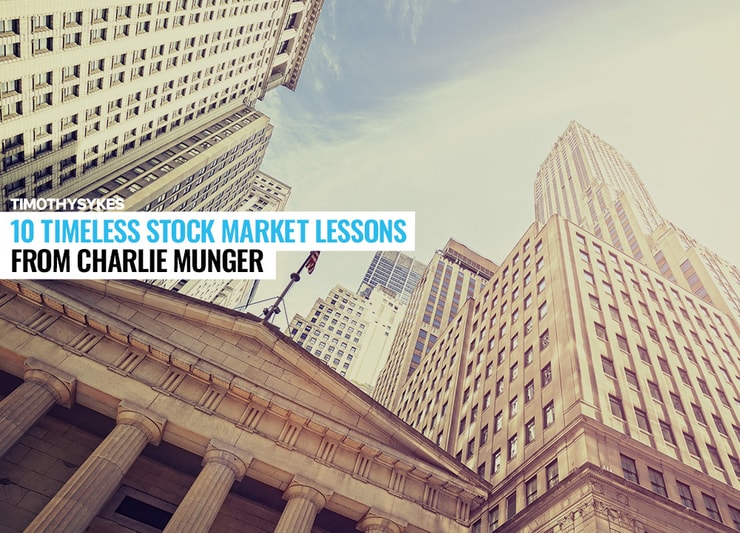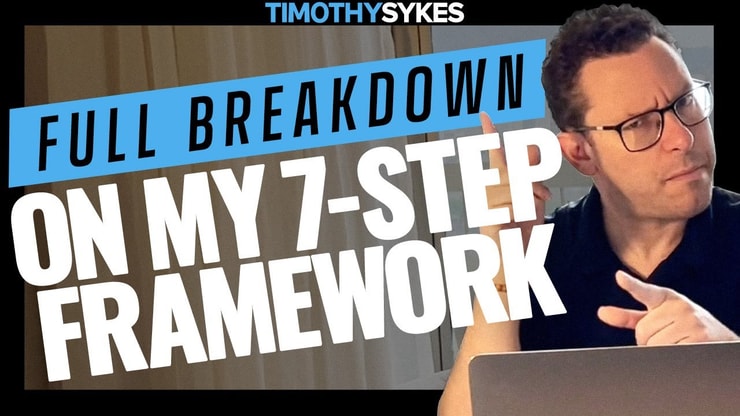On Tuesday the investment world lost an icon, losing Charlie Munger at the age of 99.
And while I consider myself a trader and not an investor, his wisdom transcends all styles.
I have a great deal of respect for his teachings and career, especially his sharp intellect and dedication to his craft…something he pursued till the end.
Rest In Peace Charlie Munger, you're not only Warren Buffett’s right-hand man at Berkshire Hathaway $BRK.A $BRK.B you're a true investing legend & legends live forever. Please everyone retweet & pay your respects to #charliemunger who exemplifies the best of the stock market! pic.twitter.com/UXXXE8rQyI
— Timothy Sykes (@timothysykes) November 28, 2023
Munger was known for his love of quotes and for his behind-the-scenes influence alongside Warren Buffett.
Here are ten of his most memorable quotes that provide valuable lessons for investors and traders alike.
Table of Contents
- 1 Lesson #1: Mental Models
- 2 Lesson #2: Learn from Others’ Experiences
- 3 Lesson #3: Continuous Learning and Curiosity
- 4 Lesson #4: Understanding Probability
- 5 Lesson #5: Simplicity
- 6 Lesson #6: The Value of Patience
- 7 Lesson #7: Avoiding Envy
- 8 Lesson #8: Honesty and Integrity
- 9 Lesson #9: Risk Awareness and Management
- 10 Lesson #10: Recognizing True Opportunities
- 11 Ready to Elevate Your Trading with Timeless Wisdom? 🌟
Lesson #1: Mental Models
“You’ve got to have models in your head. And you’ve got to array your experience – both vicarious and direct – on this latticework of models.”
It’s important that you develop a diverse set of mental models to understand and navigate the complexities of the market.
Especially as a trader.
Speed wins the race…and the quicker you are at identifying patterns the better you are at potentially taking advantage of the situation.
Lesson #2: Learn from Others’ Experiences
“We recognized early on that very smart people do very dumb things and we wanted to know why and who so that we could avoid them.”
You can learn a lot from the mistakes of others…which can hopefully lead to better decisions. This is true for both investing and trading.
That’s why I don’t run away from my bad trades.
I will create videos for my students highlighting all my mistakes, even make blog posts dissecting what I did wrong.
Most of the traders you see on social media will hit the delete button when a trade goes against them and never talk about their losses.
However, there is a reason why I have dozens of millionaire students and they don’t.
Please watch this FREE new video as I share lessons/tips I learned the hard way over the past quarter of a century https://t.co/N70GXMkGeZ and realize it took me all day to fly and my editor several months to edit to make sure we included as many useful tips & tricks as possible pic.twitter.com/0etltuixLA
— Timothy Sykes (@timothysykes) November 29, 2023
Lesson #3: Continuous Learning and Curiosity
“How do some people get wiser than other people? Partly it is inborn temperament. But if you’ve got a good temperament which basically means being very patient yet combine that with a vast aggression when you know enough to do something then you just gradually learn the game.”
In order to succeed in either trading or investing you need patience, curiosity, and the right temperament in the journey of learning.
This year has not been my best in terms of overall PnL.
I’ve found myself having to adjust some of the strategies I trade to the current market conditions. Looking back, it’s something I’ve been doing for over 20 years.
That’s because I consider myself a student of this game. And the only way to survive is by adapting.
11:37pm study check, retweet this if you're still up studying, reviewing your @StocksToTrade scans or using XGPT to research & be prepared for the #StockMarket tomorrow & going forward. Remember, 90% of traders lose due to lack of preparation/laziness so be better & do better!
— Timothy Sykes (@timothysykes) November 29, 2023
Lesson #4: Understanding Probability
“And the great useful model after compound interest is the elementary math of permutations and combinations.”
No one knows for sure whether a stock will go up or down. At the end of the day we must make a decision based on risk vs. reward.
That’s why I give short sellers such a hard time…
The probability of blowing up their account is high given this current market environment. All it takes is one bad trade to wipe them out.
Lesson #5: Simplicity
“Our ideas are so simple that people keep asking us for mysteries when all we have are the most elementary ideas.”
There’s a power in simplicity…something I preach to my students daily.
When I show them my 7-Step Framework they think there’s more too it…but there’s not.
Lesson #6: The Value of Patience
“The big money is not in the buying or the selling but in the waiting.”
While this quote refers to holding on to winners…I also believe it’s a great lesson in patience.
I’ve adopted the mantra of a retired trader. That is, act is if you’re a retired trader, only willing to get back into the market if you see a play so good…you would kick yourself for not being involved.
You see, day trading can be exciting…it can be thrilling…but it can also be unhealthy.
The name of the game isn’t about jumping in and out of 100 symbols per day. But to stay patient, and wait for the absolute best setups.
Lesson #7: Avoiding Envy
“Someone will always be getting richer faster than you. This is not a tragedy.”
You should always focus on your own journey without being swayed by the success of others.
Several of my top students didn’t make any money during their first year of trading. They easily could have given up if they based their success on profits.
But instead they focused on the process.
Lesson #8: Honesty and Integrity
“Remember that reputation and integrity are your most valuable assets – and can be lost in a heartbeat.”
I’ve been in this game for decades…and I’ve seen many come and go.
The reason why I’ve had such great success as a mentor is because of my honesty and transparency.
I show everyone all my trades…the good…the bad…and the ugly.
When I take a loss…I don’t hide from it…I teach my students what I did wrong. And that’s a lot more than most can say in this business.
Lesson #9: Risk Awareness and Management
“When any guy offers you a chance to earn lots of money without risk don’t listen to the rest of his sentence. Follow this and you’ll save yourself a lot of misery.”
Longevity is all about being able to manage risk properly. While I do mess up a lot of trades…meaning I could have probably squeezed out greater profits…The one thing I rarely mess up on is my risk management.
My number one rule is to cut losses quickly and it’s served me well.
Lesson #10: Recognizing True Opportunities
“Opportunity cost is a huge filter in life. If you’ve got two suitors who are really eager to have you and one is way the hell better than the other you do not have to spend much time with the other.”
You don’t have to sit in front of your computer all day to trade. But you do need to figure out what strategies work the best and when.
I’ve been able to travel the world, trade, and teach mainly because I’ve figured out what the optimal times to trade are.
Ready to Elevate Your Trading with Timeless Wisdom? 🌟
In the ever-shifting landscape of the stock market, it’s not just about the trades you make, but the wisdom behind them.
As we explore the timeless lessons from Charlie Munger, it becomes clear that trading is more than just numbers – it’s an art form steeped in discipline, patience, and strategic thinking.
🔥 Embrace the teachings of legends and apply them to your trading tactics.
🔥 Dive into the depths of market psychology, learning to spot opportunities where others see chaos.
🔥 Join members of my team in an upcoming live training session this week, where we’ll dissect the market with a fresh perspective.
🔥 Gain actionable strategies that blend Munger’s wisdom with the realities of today’s trading environment.
🔥 Transform your approach to risk management, patience, and opportunity recognition.
Are you prepared to trade not just with skill, but with insight?
Ready to master the market’s subtleties and nuances, armed with lessons from one of the greatest minds in investing?



Leave a reply